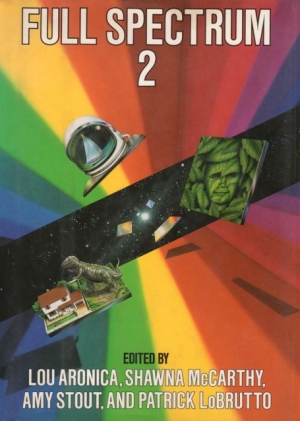Birthday Reviews: Kim Stanley Robinson’s “The Part of Us That Loves”

Kim Stanley Robinson was born on March 23, 1952.
Robinson won the Hugo Award for his novels Green Mars and Blue Mars. He won the Nebula for Red Mars, the first novel in the series, as well as for 2312 and for his novella “The Blind Geometer.” Red Mars also won a British SF Association Award, the Ignotus Award, and the Seiun Award. Green Mars won the Ignotus Award, the Italia Award while Blue Mars won the Prix Ozone. He won a World Fantasy Award for the novella “Black Air” and his novel Pacific Edge received the John W. Campbell Memorial Award.
“The Part of Us That Loves” was originally published in Full Spectrum 2, edited by Lous Aronica, Shawna McCarthy, Amy Stout, and Pat LoBrutto in 1989. Robinson included the story in his 1991 collection Remaking History and that same year it was translated into French.
The city of Zion, Illinois was founded in 1901 as a religious community. Although it has become a more traditional community over the years, Robinson uses its religious background as an effective setting for “The Part of Us That Loves.” The tale feels like two completely separate stories, though the first half provides the means of understanding the second.
The first half focuses on Naomi and Tom, two teenagers in the community band preparing for a concert in honor of two residents who are both celebrating their one hundredth birthday. The two are interested in each other, although they aren’t sure how to pursue that interest.
The story alternates between their religious education and their own understanding of what they are reading. Naomi has an unquestioning faith in the stories of Jesus and the apostles while Tom approaches them with a sense of skepticism, wondering if Jesus’ actions can be explained with science fictional rationale. When Naomi pushes on Tom, he tries to explain that he does believe in Jesus and God, although his understanding of the divine is at odds with the straightforward stories Naomi believes.
The second half of the story, set in the evening after dinner, details the discovery that while the band was eating vandals had broken into the practice room and destroyed or stolen all the instruments. Without worrying about who committed the crime, the orchestra leader, Dave, works to salvage the performance, creating make-shift instruments and repurposing toys, rubber tubes, and other items, eventually allowing them to give a successful performance.
Without being explicit, and ignoring all discussion of Jesus in the second half, Robinson clearly demonstrates the sort of divinity that Tom espoused during his lunch with Naomi. Although the story was written by a now well-known science fiction author and appearing in an SF anthology, the story has no overt science fictional or fantastic elements, although it satisfies the same sense of wonder.
Reviewed in its original publication in the anthology Full Spectrum, edited by Lou Aronica, Shawna McCarthy, Amy Stout, and Patrick LoBrutto, Bantam Spectra, 1990.
 Steven H Silver is a fifteen-time Hugo Award nominee and was the publisher of the Hugo-nominated fanzine Argentus as well as the editor and publisher of ISFiC Press for 8 years. He has also edited books for DAW and NESFA Press. He began publishing short fiction in 2008 and his most recently published story is “Big White Men—Attack!” in Little Green Men—Attack! Steven has chaired the first Midwest Construction, Windycon three times, and the SFWA Nebula Conference 5 times, as well as serving as the Event Coordinator for SFWA. He was programming chair for Chicon 2000 and Vice Chair of Chicon 7. He has been the news editor for SF Site since 2002.
Steven H Silver is a fifteen-time Hugo Award nominee and was the publisher of the Hugo-nominated fanzine Argentus as well as the editor and publisher of ISFiC Press for 8 years. He has also edited books for DAW and NESFA Press. He began publishing short fiction in 2008 and his most recently published story is “Big White Men—Attack!” in Little Green Men—Attack! Steven has chaired the first Midwest Construction, Windycon three times, and the SFWA Nebula Conference 5 times, as well as serving as the Event Coordinator for SFWA. He was programming chair for Chicon 2000 and Vice Chair of Chicon 7. He has been the news editor for SF Site since 2002.